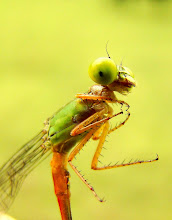Where do Algae Grow?
Algae are some of the most robust organisms on earth, able to grow in a wide range of conditions.
Algae are usually found in damp places or bodies of water and thus are common in terrestrial as well as aquatic environments. However, terrestrial algae are usually rather inconspicuous and far more common in moist, tropical regions than dry ones, because algae lack vascular tissues and other adaptions to live on land
As mentioned above, algae grow in almost every habitat in every part of the world. The following are examples of non-marine habitats.
- Animals: Reported substrates include turtles, snails, rotifers, worms, crustacean, alligators, three-toed sloths, aquatic ferns, freshwater sponges and some other animals.
Aquatic plants: Algae grow on and inside water plants (including other algae) - Artificial substrates: Wooden posts and fences, cans and bottles etc. all provide algal habitats.
- Billabongs & lagoons: Rich micro algal habitats, particularly for desmids. (Kerala has these in plenty, India in general )
- Bogs, marshes & swamps
- Farm Dams (Hydroelectric Projects could be used)
- Hot springs
- Lakes
- Mud and sand
- Ponds (ephemeral), puddles, roadside ditches and rock pools
- Reservoirs (Major water reservoirs in India can be utilised)
- Rivers
- Rock (internal & surface)
- Saline Lagoons (These too are there in Kerala and India in general)
- Saline Lakes & Marshes
- Salt marshes and salt lakes
- Sewage
- Snow
- Soil
- Streams
- Terrestrial plants - tree trunks, branches, shady sides of trees, damp walls, surface of and inside leaves.
In fact, the habitats of algae are so numerous that a more justified title for this page would be “Where Don’t Algae Grow” instead of “Where Do Algae Grow?”
Labels: Info


0 Comments:
Post a Comment
<< Home